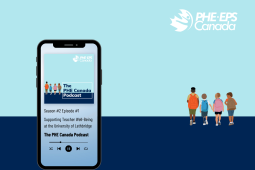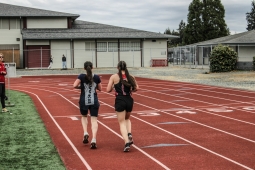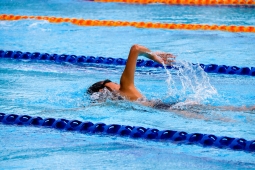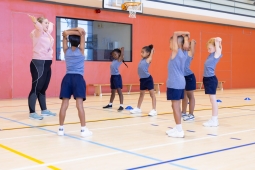Igniting Self-Leadership in PHE Through the Language of Captain and Poet: A Social-Emotional Learning (SEL) Strategy

Captains & Poets is a Kindergarten to 12 Social Emotional Leadership (SEL) program designed to foster a positive sports culture by empowering youth to be the best version of themselves. The program links Well-Being and Inclusion & Belonging initiatives to promote conversations on identity, wellbeing, self-leadership, and agency. Visit our website for more details.
PHE is key for personal and professional growth, helping students build self-awareness, resilience, and collaboration skills. Unlike traditional classroom methods, PHE offers real-time feedback on how students' actions affect their performance, teamwork, and success. This immediate reinforcement boosts confidence, encourages challenges, and nurtures the skills to thrive in life.
Integrating Social Emotional Learning (SEL) into PHE enhances students' development of essential life skills. A powerful way to foster SEL is through the Captain and Poet Archetypes, which are being used in schools across Ontario. In a complex world, these archetypes help youth use their inner compass, empowering them with emotional attunement, agency, and self-leadership. Students gain a deeper understanding of their inner drivers and strengths and find common ground with others around their differences. These archetypes offer PHE educators a framework for embedding "Social-Emotional Leadership" into their programs, helping students develop skills that go beyond physical education.
This article provides practical examples of how to incorporate Captain and Poet language into PHE practices. It serves as a resource to support students' physical, social, and emotional growth in an integrated way and in alignment with national curricula.
Who are the Captain and Poet?
The program is based on the idea that we all have a unique Captain and Poet within us. The Captain represents the "doing" side, the action-oriented part that takes charge, makes decisions, pushes boundaries, tries new things, and gains confidence through experience. The Captain is bold and adventurous when needed. Some show their Captain side openly, as the outgoing leader, while others may be more subtle, bringing integrity, discipline, and focus to the team.
The Poet is the "being" side. It represents our emotions, creativity, values, dreams, and moral compass, as well as our intuition and gut feelings. Some wear their Poet on their sleeve, being emotive or passionate, while others may be more subtle—reflective, observant, and deeply in tune with others. Poets bring understanding, empathy, and support to their team.
The balance between the Captain and Poet allows us to be our best selves. The Captain encourages the Poet to act on their ideas and pursue dreams, while the Poet guides the Captain’s actions with self-awareness and empathy toward others.
This partnership is vital. Too much Captain can lead to reckless actions or forgetting the importance of teamwork. Too little Captain can hold us back from reaching our full potential. Too much Poet can let emotions dominate, while too little Poet can leave our passions and talents untapped.
How Do the Captain and Poet Archetypes Show Up in Sports and Teamwork?
In sports and games, students’ actions and mindset come together like a dance. For instance, the Poet brings creativity and intuition to quick, in-the-moment decisions, while the Captain takes action—diving for the ball, pushing through challenges, or reaching further with ambition. As PHE educators, we witness this blend when teaching games for understanding (TGfU), skill development, decision-making (like deciding whether to pass), and managing team dynamics. A creative Poet paired with a bold Captain becomes an innovative player, while an empathetic Poet with a determined Captain forms a committed teammate. The most effective teams are made up of well-balanced Captains and Poets, fully engaged in both action and connection.
For PHE teachers and coaches, the language of Captain and Poet offers an accessible framework to highlight a repertoire of traits that students can be coached to develop and apply in real-time. This has the potential to not only contribute to performance, but to foster resilience and teamwork through the ups and downs of a match.
"The Poet shows up with the creativity and the playfulness and the positive energy that flows through individuals and the team when they are connected. It's super contagious. The Captain is the organizing, the executive functioning of making decisions, leaning back on our training and the reps that we do to find your advantage, the strategy of your physique in the moment." - Mike Anderson, Principal and U17 Basketball Coach
Practical Ways to Embed the Captain and Poet in PHE Instruction
Through a balance of engaging activities, structured reflections, and real-time feedback, PHE educators can help students connect with the Captain and Poet to enhance their personal growth through the development of leadership and teamwork skills. Let’s explore some examples of how this can be implemented.
Through the Lens of Canadian PHE Competencies
The Captain and Poet address the whole child and provide many entry points into bringing the Essential and Foundational Elements of Canadian PHE Competencies to life (pg. 14). In addition, the Captain and Poet provide an intuitive language for facilitating the Feel, Think, Gather/Move, Act competencies in all that they do.
Description automatically generatedThe Canadian PHE Competencies wheels can act as a simple language check in to assist PHE educators and students in assessing their current state moment-to-moment. For instance, when seeking a pathway to more effective self-coaching while exploring the Big Ideas/Themes in Environment, Community Connections, and Identity and Relationships, employing the competencies wheel offers a transparent and measurable approach for both students and educators.
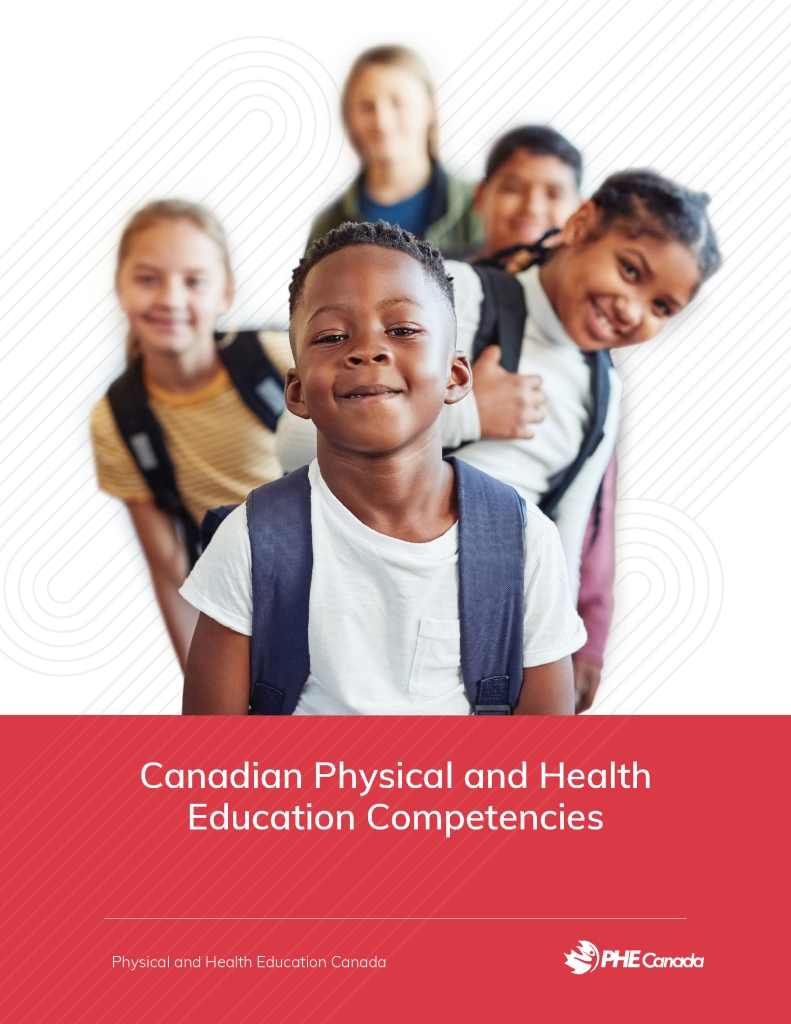
Ways To Integrate Self Leadership Language & Practices In PHE
One meaningful way to integrate the Captain and Poet archetypes into PHE classes is by intentionally creating moments for reflection and discussion as a class practice:
- Defining Roles: As a class, define how the Captain and Poet should engage in today’s activity. This provides students a rubric for assessing both their individual performance and that of their team.
- Activity Debrief: During an activity debrief on a scrimmage, ask students to assess (e.g., rate from 1 – 10) how effectively their individual and collective Captains and Poets are performing. Questions like, “What would get us from a 5 to a 7?” help identify and make components of success more accessible.
- End-of-Class Reflection: At the end of class, during a stretch, have students share insights and learnings about how they can better embody their Captains and Poets in future activities to consolidate concepts. This encourages students to reflect on how to bring their Captains and Poets more fully into the next activity.
These practices provide students with opportunities to enhance their self-awareness and sense of agency in their development of both their physical literacy and self-leadership abilities.
Understanding & Building Self-Leadership
Self-leadership is how we show up in the moment for ourselves and others and it begins with self-awareness. Being aware of the different aspects of ourselves in any given moment allows us to pause and align our motivations with our actions. Providing language for this metacognition with students empowers them with a sense of ownership and, when there is ownership, there is self-leadership.
Consider the following questions to support students with developing self-leadership:
- What does my team need from me?
- How do I want to respond the next time that happens?
- Who do I want to become?

Through the Lens of the Provincial Curriculum
As a further example, the Ontario HPE Curriculum Grades 1-8 (2019) provides various entry points for using this language to build self-leadership through PHE.
Identification & Management of Emotions
Channeling emotions through physical activity is crucial for managing the Poet’s well-being. Acknowledging the Poet’s emotions in heated moments helps diffuse situations, allowing the Captain to take a breath and redirect that energy positively. When challenges arise, it presents an opportunity for self-coaching:
- What was happening with your Poet?
- What would have happened if your Captain had shown up differently?
Stress Management and Coping
Managing the natural ups and downs in PHE builds resilience. Balancing the Captain and Poet is an ongoing exercise that helps students realize they possess the inner resources they need. In facing challenges, the Captain lends confidence:
- What small step can I take to lean into the game more?
- What is one change I can make to my serve or shot that will make me more successful?
Positive Motivation and Perseverance
Recognizing these dual aspects encourages a growth mindset. The Poet serves as their “why,” helping students envision their ideal outcome and identity. The Captain perseveres when things get tough, inspiring a growth mindset and facilitating the setting of meaningful goals:
- I can’t hit the ball with the racquet…YET.
- My Poet is going to visualize that shot so I am ready next time.
Critical and Creative Thinking
The creativity of the Poet combines with the executive functioning of the Captain, together embodying the art and science of sport. When students have the language for these parts, they can better understand the inputs and outputs of their experiences. By extension, it makes it easier to embrace the novel ways of thinking in others for creating solutions together. For example, if a dodge and weave around a larger opponent fails, students can reflect on improvements:
- What change can I make next time?
- If our team isn’t as aligned as it could be, what traits could we build on in each player?
Healthy Relationships
Understanding and embracing all parts of ourselves enhances our ability to understand others, fostering social awareness and the ability to recognize there are multiple ways to approach things. Collaborating with diverse individuals empowers students. For example, Anthony’s reflective Poet assists with the strategy, while Farid’s decisive Captain gives input on what to do, and Maya’s observant Poet pays attention to what is and isn’t working, while Sophia’s determined Captain motivates everyone on the team.
Self-Awareness and Sense of Identity
Recognizing what makes us unique is foundational to our identity in the world. Embracing the things that differentiate us (and likely, our gifts) lays the groundwork for a culture of inclusion, enabling students to appreciate the value diversity brings to teamwork. Each student’s Captain and Poet differ, and this diversity enhances innovation and team performance.
When students embrace their unique perspectives on teamwork, sports, and life, they create a blueprint for personal development, community contribution, and connection with others. Understanding how they fit into group dynamics is empowering, enabling them to become effective self-leaders who inspire those around them.
Additionally, when students suggest that Captain is synonymous with leader, it presents a valuable teachable moment. For instance, encourage students to list leadership qualities and reflect on them. This exercise will reveal that effective leadership is actually a balanced combination of Captain and Poet traits, allowing students to see that everyone has the potential to lead.
The Benefit for PHE Educators: Understanding Students’ Inner Drivers
When PHE educators understand a student’s unique inner drivers, they can better tailor feedback to the Captain and Poet in front of them. Here are some examples of effective feedback:
- “I love your Poet’s passion for winning. Let’s slow your Captain down to assess the best move in that situation.”
- “I know your Poet saw the opportunity there. What held your Captain back from acting?”
- “How do you think your teammate’s Poet felt when you didn’t pass the ball? What can your Captain do next time to make us a stronger team?”
By fostering this understanding, students can begin to own these parts of themselves and learn to draw on their innate resources in all aspects of their life. For example, encouraging a student to harness the way their Captain comes to life and perseveres on the basketball court can help them tackle a challenging math problem later in the day.
Furthermore, understanding one’s own unique Captain and Poet as an educator and how they intersect with the curriculum, instructional methods, coaching, competition, and teamwork can be incredibly valuable. Modelling this heightened self-awareness helps bring PHE to life in powerful and authentic ways for students.
Conclusion
Teaching physical literacy allows PHE educators to develop physical, self, and social literacy in an integrated way that supports student success both in school and life. Fostering self-leadership in students is central to teaching PHE; coaching youth to be their best selves is at the heart of what PHE educators do. The power of embedding SEL as a learning strategy in PHE is immense. It creates a whole-school approach, where students carry their Captain and Poet with them throughout the day.
Self-leadership, once known as character development, is more crucial than ever. It is not just about sportsmanship or being a good student. Young people need an inner compass to navigate a rapidly changing world. The answers to navigating daily life are increasingly internal, not external. PHE provides a unique opportunity to teach youth how to draw on their inner resources to thrive and show up fully for themselves and others in the future.
As PHE educators, you face the same challenge in managing the unprecedented needs of your students. This requires tapping into your own inner resources and nurturing the same in your students. Introducing a human lexicon into PHE optimizes the transfer of skills from coaching in the moment to everyday life.
Above all, we want students to know they’ve got this.
Resources
If you are interested in learning more about how to ignite a positive sense of agency and growth within your students, check out these additional resources:



